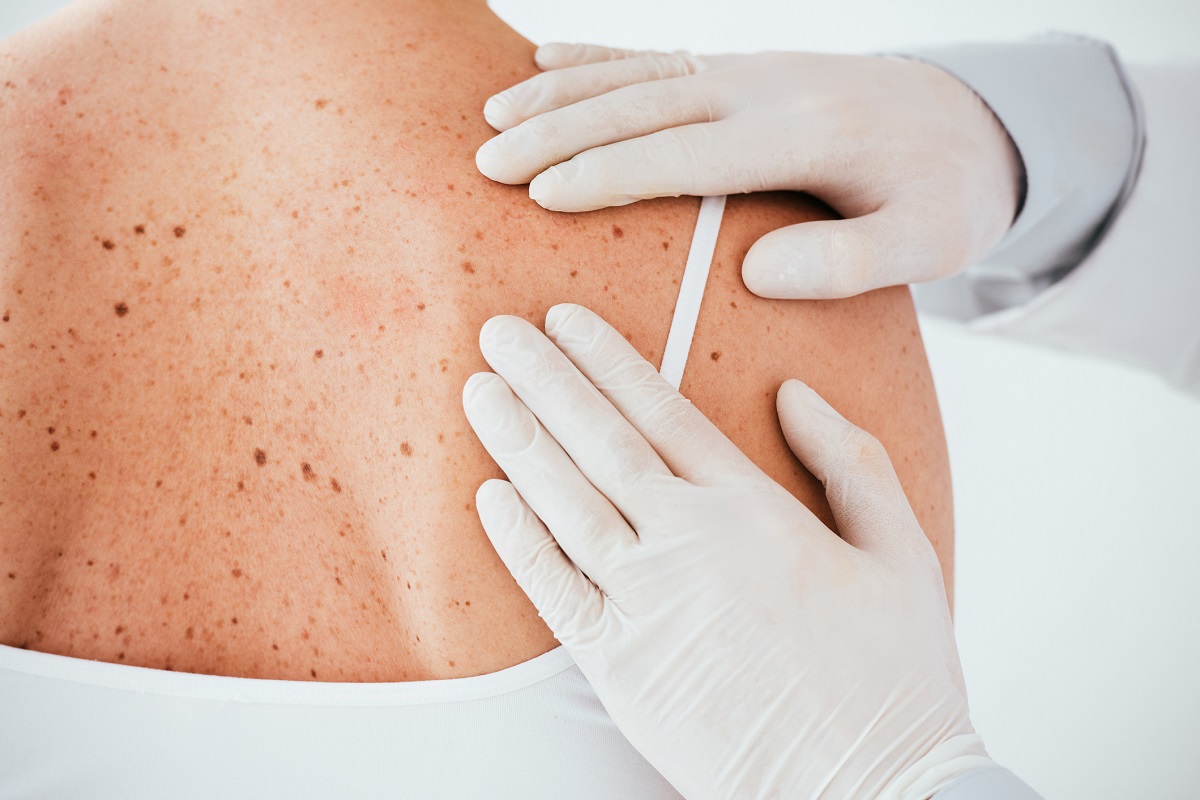The Medical Minute: What to know about skin cancer

Skin cancer is the most commonly diagnosed cancer in the United States, but with early detection and attention to personal care, it’s preventable, highly treatable, and in many cases, curable.
“The three most common types of skin cancer are basal cell carcinoma, squamous cell carcinoma and melanoma,” said Dr. Charlene Lam, a dermatologist at Penn State Health Milton S. Hershey Medical Center. “Those are the ones that you hear about most often, and they probably represent 90 to 95% of the skin cancers out there.”
In most cases, they’re all caused by overexposure to ultraviolet (UV) radiation from the sun, triggering the formation of abnormal cells.
One in five Americans will get basal cell carcinoma, which often starts as a pink bump, which can bleed and doesn’t heal, Lam said. “Squamous cell looks like a bump that can be dry, red and scaly,” she said. “Melanoma is a pigmented lesion ― a dark spot that’s grown. Although it’s the least common of the skin cancers, melanoma gets a lot of press because of the high mortality.”
It’s good practice, Lam said, to consider the acronym ABCDE help identify irregular lesions:
- A for asymmetry ― is half the mole not like the other half?
- B for irregular borders ― are the edges ragged, notched or blurred?
- C for color — any dark black, red or gray lesions?
- D for diameter — look for anything larger than the tip of a pencil eraser, about 6 millimeters
- E for evolution — is the lesion changing?
Here Lam discusses the value of being aware of your skin, preventing skin cancer and when to see a dermatologist for a sunburn or a skin cancer screening.
What’s the best way to prevent skin cancer?
Skin cancer can be prevented with good sun protection. We recommend sunscreen of at least a Sun Protection Factor (SPF) of 30, making sure you reapply every two hours. In addition, consider protective clothing, like long sleeves. Certain clothing types have ultraviolet protection, so those are great options as well. Wearing a hat and sunglasses and seeking shade are all ways to protect yourself. Avoid that midday sun, from 10 a.m. to 2 p.m., when it’s most intense.
The other thing is incidental sun exposure. When people go to a ball game or the beach, they put on their sunscreen. But those times where we’re just going to run to the mailbox or the store are when people forget, and we know that the cumulative effect of all UV exposure does matter.
It’s also important to have good awareness of your skin. Check yourself, and check your family and your partners because they can’t always look at their backs.
When should you see a dermatologist or schedule a screening?
I think evolution is key: Is the lesion changing? Is it growing? Is it bleeding? Those are the signs that you need some attention and should have a medical professional look at it. Penn State Health Dermatology offers free skin cancer screenings once a year in the spring at three of its locations in central Pennsylvania. Over the past 10 years, we have screened more than 6,000 people. If you are worried about something, don’t wait until the spring, though. Get it checked.
How much risk do we face?
Individual risk varies, depending on the color of the skin and type of skin. But anybody can get skin cancer. If you have skin, you can get skin cancer. There’s a misconception that if you have darker skin, you won’t get skin cancer. That’s not true. Obviously, there are certain types of skin that have a higher predisposition, but you can get skin cancer regardless of the color.
If you have a lighter type skin and lighter eyes, you’re at a higher risk and more susceptible to UV radiation. So, there are varying degrees of risk depending on your phenotype. There are certain genetic mutations that can predispose you to skin cancer, though those are relatively rare.
Are we at risk of UV overexposure year-round?
The sun isn’t afraid of clouds. UV rays can go right through the clouds, so even on a cold, cloudy day, you can get a sunburn. That’s why I tell my patients to have their sunscreen in their moisturizers, so it becomes a routine.
When should I see a dermatologist for sunburn?
Signs that your burns could be significant include painful, red and peeling blisters with any systemic symptoms. If you start having fevers, chills, nausea and signs of an infection, in addition to a blistering sunburn that covers more than 20% of your skin, it’s time to see somebody. Because our skin protects us from infections, when the sun suddenly burns our skin, it no longer functions properly.
If skin cancer is suspected, what happens next?
The great majority of skin cancer is diagnosed via skin biopsy.
Do you see promising treatment advances for more serious skin cancer cases?
Absolutely. Over the past 10 to 15 years, we’ve seen a lot of advances in skin cancer treatment and different modalities, specifically with basal cell skin cancer and melanoma. We’ve seen specific targeted therapies toward the gene mutations in basal cells. And with melanoma, we’ve been seeing a lot of promising, newer treatments that stimulate the immune system to treat the skin cancer. When caught early and when treated early, skin cancer can be curable.
Related content:
- The Medical Minute: How artificial tanning can lead to melanoma
- The Medical Minute: Sunscreen — still a smart way to protect your skin
The Medical Minute is a weekly health news feature produced by Penn State Health. Articles feature the expertise of faculty, physicians and staff, and are designed to offer timely, relevant health information of interest to a broad audience.
If you're having trouble accessing this content, or would like it in another format, please email Penn State Health Marketing & Communications.
